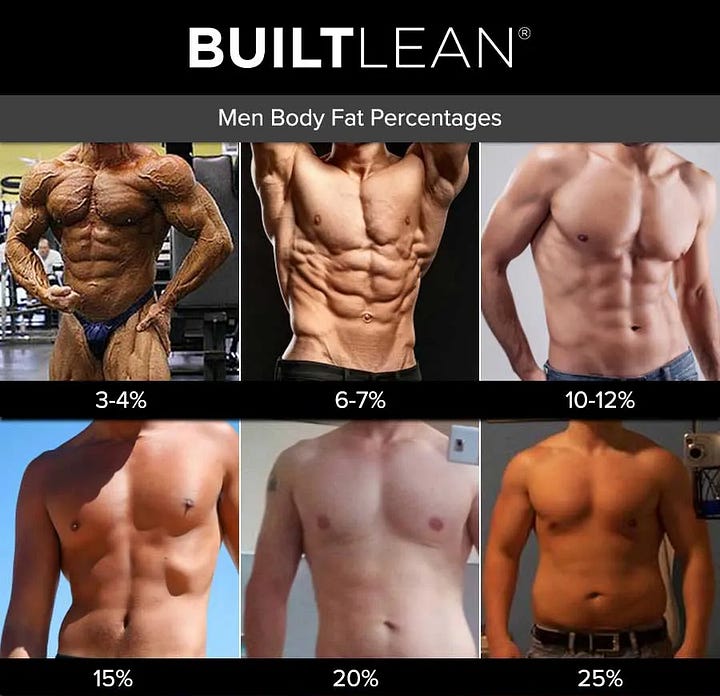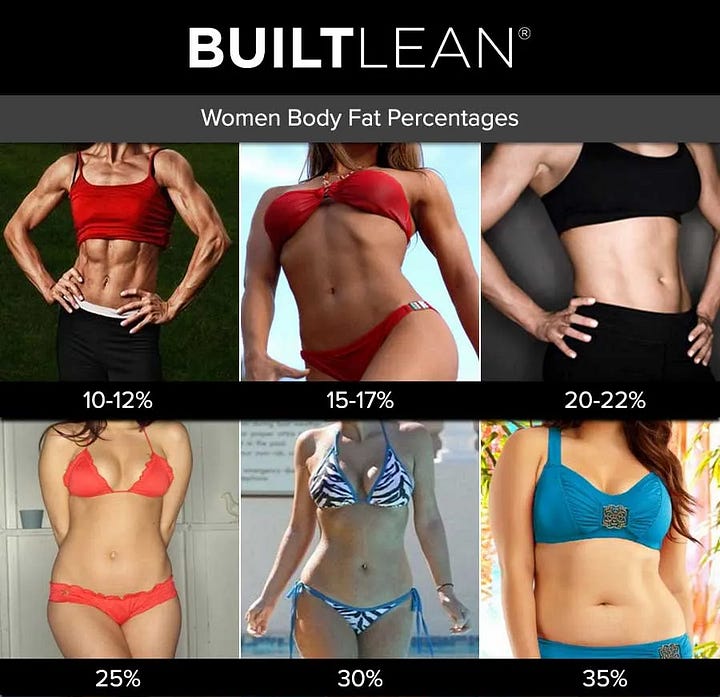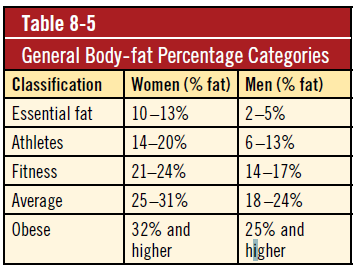It’s actually really simple to get jacked. That’s not to say it’s easy- just that the complexity of the challenge is trivial, requiring only time and energy to succeed.
Now, you’re probably raising your eyebrows at this claim. Everywhere you look, there are personal trainers, fitness influencers, nutritionists, and even exercise scientists with conflicting information. Go to any gym, and you’ll see different people doing wildly different exercise routines. Surely, that implies building muscle is a complicated subject? Well, no. For 2 reasons:
The fitness industry thrives on misinformation, because all the money is made in selling supplements, accessories, and ‘personal training expertise’ that have no scientific legitimacy1
Most people are cognitive misers who actively avoid mentally demanding tasks and refuse to read anything academic2
The result is a very large proportion of fitness enthusiasts have essentially no idea what they’re doing, and even the somewhat knowledgeable ones are still full of misinformation. So, how do we cut through the noise?
Getting Jacked
Think of getting jacked as something like this formula:
X is your adherence to primary concepts, y is your adherence to secondary concepts, and z is your adherence to tertiary concepts. Primary and secondary concepts are a collection of just a handful of relatively simple ideas that require little financial investment. If you just focused on these, you would find getting jacked to be relatively straightforward. But tertiary concepts, predominantly supplements, are innumerable, complex, and require tons of money.
The entire fitness industry is built around obfuscation such that the tertiary concepts can be promoted and sold. And it works wonderfully for making money- but terribly for our motivation to actually get into the gym and train properly.
The paradox of choice is a concept introduced by psychologist Barry Schwartz which suggests that the more options we have, the less satisfied we feel with our decision. This phenomenon occurs because having too many choices requires more cognitive effort, leading to decision fatigue and increased regret over our choices.3
The sheer amount of conflicting information out there certainly makes it difficult to know who to listen to, but it also actively discourages people from getting into fitness at all. And even if you were able to expertly navigate this whole industry of tertiary concepts to find the absolute optimal program, that would still represent just 10% of your results! Nearly everyone should be ignoring Z entirely and instead focusing their efforts on the simple stuff in X and Y.
But what is this simple stuff, you might be wondering? Fortunately, unlike in decades past, we no longer have to rely on the ‘bro-science’ of anecdotes and dubiously extrapolated study conclusions. On the contrary, in the age of information we now have robust research data on what actually matters for getting jacked.
Primary Concepts (60% of Results)
1. Progressive Overload
The most important concept is progressive overloading, which is simply increasing your weight resistance over time as your body adapts.4 Muscle growth is a continuous cycle: the body adapts to a given stress, and to continue improving, that stress (e.g., weight, reps, sets) must be gradually increased, forcing the body to adapt again. No matter what exercises you’re doing, or for how long, or with what intensity, the most important thing is that you need to constantly be increasing the challenge. Going to the gym every week for 3 years curling the same 20lb dumbbell isn’t going to do anything. But if you’re curling 30lb at the end of year 1, 40lb at the end of year 2, and 50lb at the end of year 3, guess what- you’re getting jacked.
2. Train to Failure (1 RIR)
You also need to be really pushing yourself hard in the gym, because it’s specifically the last few reps right before your muscles fail that seem to drive results. Modern studies have consistently shown that training to 1 rep-in-reserve (RIR)- continuing a set until you have only enough strength left to complete 1 more final rep- maximizes strength gains and muscular hypertrophy while limiting risk of injury.5 Basically, keep lifting until you have doubts about whether or not you can complete another rep. If you can squat 100lb for 10 reps, for 3 sets in a row, then that first set was almost certainly not being trained to 1 RIR. What those 3 sets should look like is something like 10 reps, 8 reps, 6 reps- despite you giving it maximum effort on every set. This indicates that you were indeed pushing yourself close to failure and fatiguing yourself in the process.
3. Consume Sufficient Protein
It’s a trope that gym bros are obsessed with protein, but this is for good reason. Muscle growth cannot occur without sufficient protein.6 And relatively high amounts of protein are required in order to optimize muscle growth. Studies suggest increasing protein has a significant impact on muscle growth up to about 1.6-2.2g/kg (0.7-1g/lb) of body weight with substantially diminishing returns after that.7 The International Society of Sports Nutrition currently suggests consuming a slightly lower range of 1.4-2.0 g/kg. In other words, if you’re hitting anywhere close to 1g/lb of body weight of daily protein, you’re getting the full benefits. It doesn’t matter much where the protein comes from, though great sources include grilled chicken, Greek yogurt, and protein powder. It also doesn’t matter much how you split this protein up throughout the day, though there is some evidence that protein intake of no more than 40g per meal is optimal.8 But, in general, just focus on hitting the absolute numbers and the rest will follow.
4. Abs are made in the gym, and revealed in the kitchen
The final basic concept is that nobody can admire your muscle if you’re fat.9 Building muscle mass is step 1, but step 2 is cutting down to a low enough body fat to reveal that muscle. Overall appearance even at the same leanness can vary depending on individual skeletal structure, body fat distribution, and muscle mass- but nonetheless this is what fairly muscular men and women look like at various body fat percentages.


The American Council on Exercise (ACE) has the following classifications for body fat %.10
Today’s beauty standards for ‘jacked’ tends to fall somewhere around 12% for men and 20% for women- just making it into the ‘athletes’ category. Most amateur fitness enthusiasts dramatically overestimate how lean they actually are. At 12% body fat for men, you should be seeing:11
Defined abs visible when flexed, with a noticeable “V-cut” above the hips
Clear separation between muscle groups, such as rear delts to side delts
Increased vascularity with prominent and visible veins on the arms and shoulders
Sharper facial features, particularly noticeable around the jawline
And at 20% body fat for women:12
Muscle definition pops when flexed, particularly in shoulders and quads
Flat stomach (but without sharply segmented abs)
Little excess fat, mostly in hips, thighs, and buttocks- with a smaller waist
Sharper facial features, noticeable around the jawline and cheekbones
Secondary Concepts (30% of Results)
If you’re following the above concepts perfectly, it literally does not matter what else you will do- you will get jacked. But if you really want to optimize your routine, here are a few other concepts to consider.
1. Focus on Compound Lifts
Compound lifts are big, multi-joint exercises that recruit more muscle groups to perform. The more muscle fibers recruited, the stronger the neural signal- and the bigger the adaptive response.13 With just 5 exercises (squats, deadlifts, bench press, overhead press, and pull-ups), you will work every major muscle group. It’s easy to improve your form on just these rather than 20 different exercises, easier to track your progress, easier to optimize your time spent in the gym, and they also tend to be more functional for real world strength. Most people should absolutely be relying on compound lifts for their bread-and-butter exercises.
2. Optimize Weekly Set Counts
Multiple studies have confirmed that somewhere around 10-15 sets per muscle group per week is ideal, usually split over several days. The definition of a set varies, but in the research a set is generally counted for a muscle only if that muscle is the main driver of the movement.14 For example, if you do 5 sets of bench press and 5 sets of overhead press on Mondays and Thursdays, you’re already hitting 10 sets per week of chest and shoulders- adding a 3rd day would probably only be worthwhile if easy to fit into your gym schedule. But if you’re only doing 3 sets each workout, then your rate of muscle growth will definitely be slower than it could be.
3. Follow Lifting Programs
A lifting program tells you what to lift, when to lift it, and how much to suffer while doing so. More formally, it’s a systematic schedule of sets, reps, rest intervals, and progression rules designed to move you towards a goal- usually strength gains, muscle growth, or both. Various gymgoers will swear by various lifting plans that they have tried over the years. One of the most popular, especially for beginners, is called the StrongLifts 5x5. It simply recommends 3 full-body workouts per week on MWF, alternating between workout A and B, with 5 sets of 5 reps for all exercises. Workout A is Squat, Bench, Row. Workout B is Squat, Overhead Press, Deadlift. Try to add 5lb to your lifts every single workout. Rinse and repeat for ~6 months, expecting massive progress as you reap the full rewards of newbie gains.15
It’s important to note that any lifting program can work, as long as it follows all the primary concepts. More important than program selection is sticking with it over time.
Tertiary Concepts (10% of Results)
1. Rep Ranges
Rep ranges used to be all the rage in the 2000s, during the height of bro science culture. It was fashionable to adjust your weight to target a certain number of reps, such as “15+ reps for endurance, 6-12 reps for size, 1-5 reps for strength.” Turns out, it literally doesn’t matter.16 Countless studies have demonstrated that what actually matters is going to failure- and whether that happens on the 5th rep or the 25th rep has little relationship to strength and size gains.17
With that said, why not pick a practical range? If you hit 1-rep-maxes every workout, you’re placing your CNS under severe stress, putting immense strain on your joints, and increasing the chance of injury. If you pick such a light weight that you can do 20 reps straight before feeling fatigued, that’s just not time efficient. Somewhere in the middle, perhaps a weight such that you can perform 10 clean reps on your first set (with less on subsequent sets), is probably the best approach.
2. Mixing It Up
When your body adapts to the same stimulus, it becomes more efficient, leading to stagnation. By introducing different exercises targeting different planes of motion, or switching up the rep scheme, you force new adaptations and can break through plateaus. For example, if plateauing in the usual 10-rep range, it seems to help many individuals to spend a few months training at 5 reps or 20 reps.18 It’s worth noting, though, that by the time this becomes a serious consideration, you tend to already be pretty jacked.
3. Add Isolation Work
Unlike compound lifts, isolation exercises target specific muscles by involving only one joint at a time. Some specific muscles that tend to be underworked by compound lifts and ideal for isolation include biceps, triceps, lateral delts, calves, and abdominals.19 They can be worked by bicep curls, triceps extensions, cable flies, calve extensions, and hanging leg raises. But, again, keep in mind that this is likely completely superfluous unless you’re already at least an intermediate lifter well past newbie gains.
4. Supplements
The big one. The $$$ dollar signs. Where fortunes are made and careers are built.
The truth has remained, for decades, that the only supplements worth taking are protein and creatine.20 Everything else has either no evidence whatsoever, dubious study designs, massive conflicts of interest, or commonly a collection of these problems.21 For a deep dive on how exactly to investigate supplements, see below. Otherwise, take my word for it- basically everything is a scam.
We’ve already covered the importance of protein. Protein supplements including powder, bars, shakes, are all worthwhile- though there isn’t much difference between brands and products. Meanwhile, creatine is the most studied supplement in the world- with demonstrated benefits in strength training as well as to lesser extent cognitive functions like memory. There have been virtually no health risks observed. All available evidence suggests that that a modest daily supplement is worthwhile.
5. Personal Trainers/Workout Classes
Here’s the thing: personal trainers can absolutely be helpful. But it’s not that they have the secret sauce to getting jacked. Their usefulness comes from motivating you, keeping you accountable, and helping form healthy habits. IF you are confident that you can do all this on your own, then by all means go for it. But if you’ve been struggling for years to start committing to your fitness hobby, it might be very useful to consider finding a personal trainer. Similarly, boxing classes, soul cycle, hot yoga, the value comes from being fun! Any exercise where you consistently show up is better than an ‘optimal’ exercise that you never do. But you still need to find ways of progressive overloading and training close to failure, which can be difficult in many classes.
Common Misconceptions
“I don’t want to be muscular- I want to be toned.”
Scientifically speaking, 'being toned’ isn’t some special thing.22 It’s simply sufficiently large muscle mass at a sufficiently low body fat %. Whether you want to look ‘big’ or ‘lean’ or ‘toned’ or ‘fit’ or ‘jacked’, the answer is always the same: follow the primary and secondary concepts to build muscle over time while targeting your preferred body fat %. If you just want to look ‘toned’, then you’re in luck, because that takes a lot less time than if you want to look 'jacked’!
“Women shouldn’t go to the gym, or they will get too bulky.”
First of all, I think we can all agree this blanket sentiment is extremely problematic (why are we telling women what they should do or shouldn’t look like??). But second of all, it’s not even true! For the average woman to get the ‘bulky’ look of female body builders would take literally years of dedication. And the only way to get there is to first pass through the ‘toned’ look of a lower muscle mass, at which point anyone can choose to stop.
“If you just follow the right program, you can get jacked fast (AKA 10-week bootcamp).”
One of the big reasons the fitness industry sells so well is that people are impatient. We all want immediate results. But the unfortunate truth is that the gym bodies you see in film, social media, or at the beach generally took years of dedicated training. There is no magical shortcut. Remember the golden formula: Getting Jacked = Time * (0.6x+0.3y+0.1z)
“Do ab exercises to burn stomach fat.”
‘Spot reduction’ has been debunked for a long time now. Ab exercises will increase muscle size, which can improve definition and create the appearance of less body fat, but the only way to actually lower your body fat % is through careful dieting.23
“I look so unfit compared to fitness influencers on social media.”
A huge number of fitness professionals are on TRT24 at minimum or far more intensive regiments of steroids.25 It’s effective, but dangerous. For the vast majority of amateur fitness enthusiasts, it is not worth pursuing. And, if you must compare your progress to others at all, it should be apples to apples against other natural lifters.
“You can look big without a shirt, or with a shirt. But you can’t look big in both.”
This one has a little more truth to it. It refers to looking big and strong in your clothes at the tail end of a bulk, at your heaviest- but you might look kind of fat in a swimsuit. But when you cut down to your leanest at the tail end of a cut and have lots of muscle definition in a swimsuit, you’ll look kind of small in your clothes. But the truth is that the majority of the country is extremely unfit! As long as you take a step back from comparing yourself to fitness influencers, it’s very likely that to most people you in fact look very impressive regardless of whether it’s at the beach or the cafe.
Conclusion
If you do 10-15 sets per muscle group each week, take each set close to failure (1 RIR), progressively increase the weight over time, eat anywhere close to 1g protein/lb. of lean body mass, and then ultimately cut to a lean body fat %, you will get jacked.
If on top of that, you train heavy compound lifts (squats, deadlifts, bench press, pull-ups) and follow a simple lifting plan like 5x5, you will get even more jacked.
If, after absolutely mastering all prior concepts, you want to spend enormous time and energy dialing in the exact rep ranges, isolation exercises, and supplements that makes the most difference to you, in order to fight tooth and nail for that last 10% of explanatory power over your results, then by all means go for it. But by this point, you will be so jacked that you could become a fitness influencer and sell your own supplements to the unsuspecting masses- a far better value proposition.






This is so similar to personal finance. Everyone (the industry) focussed on the tertiary concepts (investment strategy) when the bulk of the success comes from an individuals behaviour (savings rate, delaying gratification, behaving well as an investor). But there ain’t much money in that and everyone wants a quick fix. Thank you for the piece.
Solid, well-researched, disinterested summaries like this make the world a better place. Have a nice week!